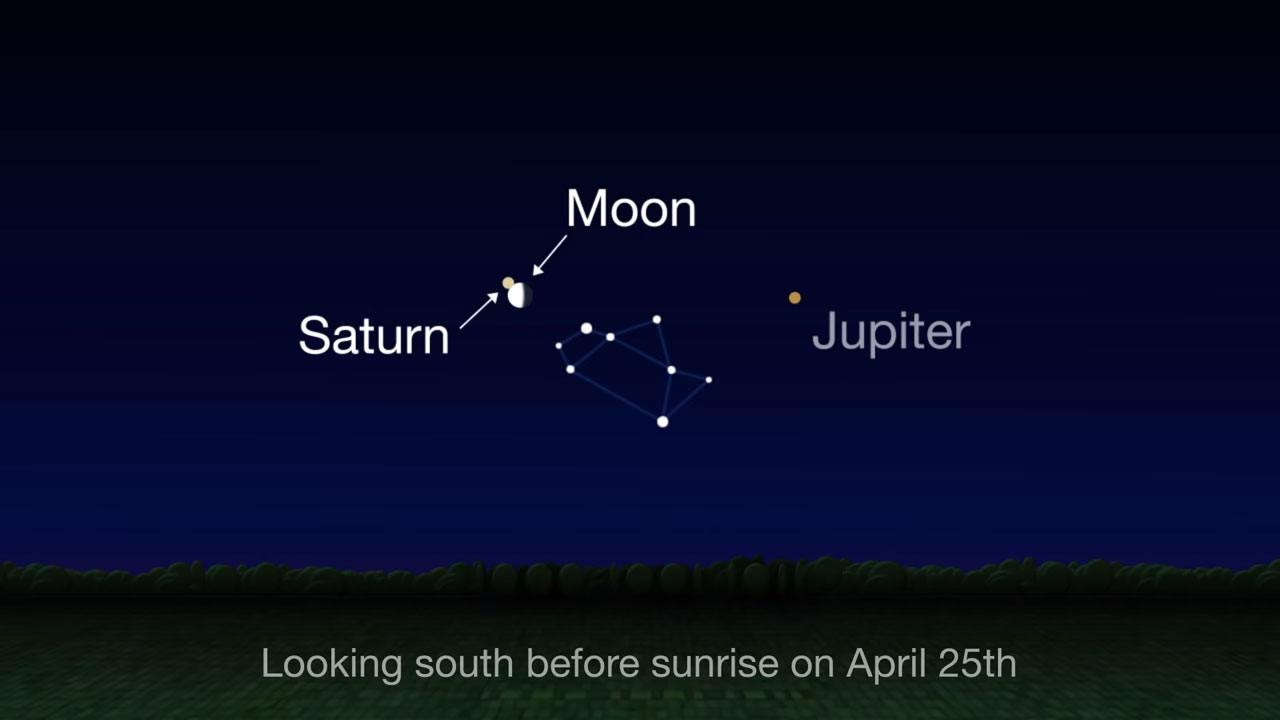You Can See the Moon Occult Saturn Thursday! Here's How.
Saturn will play 'peekaboo' with the moon.

On Thursday (April 25) the moon will make a close approach to Saturn in the predawn sky. For lucky skywatchers in part of the globe, the moon will actually pass in front of the ringed planet.
The occultation of Saturn will be visible across the South Pacific, including eastern Australia, New Zealand and New Caledonia. During that time, Saturn will hide behind the moon for over an hour. In Melbourne, Australia, the planet first ducks behind the moon at 10:40 p.m., and it reappears at 11:26 p.m. local time. You can find a visibility map and a timetable for the occultation at lunar-occultations.com.
In the rest of the world, skywatchers can still enjoy a nice view of Saturn and the moon in the morning sky. The pair will make their closest approach at 10:27 a.m. EDT (1427 GMT), but be sure to look up before sunrise, because it will be easier to see Saturn when the sky is dark.
Related: The Moon Shines with Jupiter and Saturn This Week! Here's How to See It
Editor's Note: If you have an amazing night sky photo or video you'd like to share with us and our news partners for a possible story or image gallery, send images and comments in to spacephotos@space.com.
- Exploring the Moon in April: A Night-to-Night Description
- Night Sky, April 2019: What You Can See This Month [Maps]
- As Saturn Slips Behind the Moon (Op-Ed)
Email Hanneke Weitering at hweitering@space.com or follow her @hannekescience. Follow us on Twitter @Spacedotcom and on Facebook.
Breaking space news, the latest updates on rocket launches, skywatching events and more!

Hanneke Weitering is a multimedia journalist in the Pacific Northwest reporting on the future of aviation at FutureFlight.aero and Aviation International News and was previously the Editor for Spaceflight and Astronomy news here at Space.com. As an editor with over 10 years of experience in science journalism she has previously written for Scholastic Classroom Magazines, MedPage Today and The Joint Institute for Computational Sciences at Oak Ridge National Laboratory. After studying physics at the University of Tennessee in her hometown of Knoxville, she earned her graduate degree in Science, Health and Environmental Reporting (SHERP) from New York University. Hanneke joined the Space.com team in 2016 as a staff writer and producer, covering topics including spaceflight and astronomy. She currently lives in Seattle, home of the Space Needle, with her cat and two snakes. In her spare time, Hanneke enjoys exploring the Rocky Mountains, basking in nature and looking for dark skies to gaze at the cosmos.
